The following article is written by TAP’s contributing author Andrew Halsing. Check out his tips for streamlining your camp cooking kit, then go get ready for your next adventure!
Cooking and food prep items can take up a lot of room in our rigs. I have made serious efforts in streamlining my camp kitchen cooking kit. Currently I’m down to using a JetBoil Flash cook system for almost all of my needs.
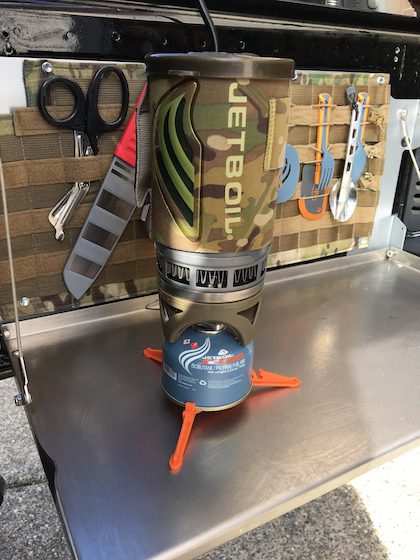
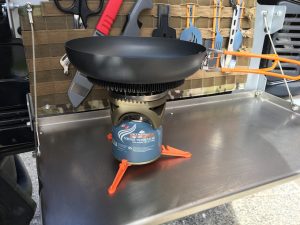
I love the versatility and compact approach this system takes. The addition of the JetBoil Fry Pan, and JetBoil Pot Support makes this a comprehensive single user system. A limitation this system has is that it takes finesse and attention when cooking, to ensure you don’t burn your food. I learned this the hard way making coffee. I had it on high, turned around and started talking to someone and it boiled over the top, getting coffee grounds and boiling hot water all over my Trailgator. I won’t do that again!
My Overland Kitchen consists of:
– JetBoil Flash
– JetBoil Pot Adapter
– JetBoil Fry Pan
– 2x JetBoil Fuel Canisters
– JetBoil Coffee Press
– Hand Sanitizer
– Can Opener
– Tin Foil
– Paper towels
– Dish Soap
– Sponge
– Steel Wool Pad
– Trash Bags
– Cleaning Wipes
– Small Bottle of Olive Oil
– Salt and Pepper
In addition to that I still have a Coleman Propane stove and pots on standby, depending on what people in the group are going to take out with them.
Something that goes with cooking like peanut butter goes with Jelly, is water. While on the trail, I generally carry between 6.5-11.5 gallons of potable water. I start my trip with two full Nalgene bottles, two 1 gallon water jugs, two 2 gallon Rotopax water cans and depending on the length of the trip, five gallons of water in my AEV Bumper Storage Tank. While having plenty of water on hand is important, I chose to carry equipment that filters or purifies water from other sources as well. There are many ways to accomplish this. Chemical treatments, bleaches, UV, and filters. After reading a number of reviews, articles, and doing some diligent personal research, I ended up purchasing an MSR Mini Works Filtration System. It’s easy to use, field maintainable, and moderately priced. It filters most things, however will not filter viruses. Most of the water here is snow melt run off, so this system suits my needs. What I truly enjoy about having a filter system is the peace of mind it provides. There aren’t many worse feelings than the anxiety that running low on water produces and having a filtration system helps alleviate that stress. I strongly suggest researching filtration systems to find the one that suits your needs. They are well worth the money.
The next thing I’d like to talk about is what to pack to ensure that you are able to make a fire in any sort of weather. I live in an extremely damp environment, so take many precautions not to be caught out without a way of starting a fire in challenging conditions. I always keep two long-stemmed lighters, pretty basic, I know. I test them before I go out and make sure that one is kept in a handy, easy to find location. I bring some more basics: newspaper and dry firewood gotten from the store. I can usually find plenty of wood where I camp, but there are many areas that prohibit collection of wood for fires. I always bring my own. A “last resort” fire starter item that is seldom thought of are road flares. I keep 6 in my Jeep for emergency use, however they can double as fire starters. I wouldn’t use one for starting a cooking fire as I’m sure their chemicals are toxic. When I’ve been cold and out of alternatives they have come in handy.
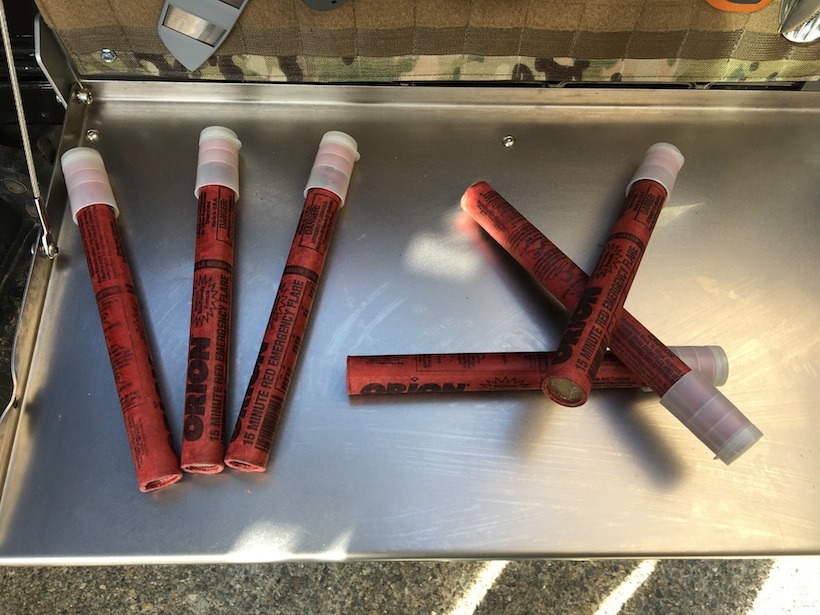
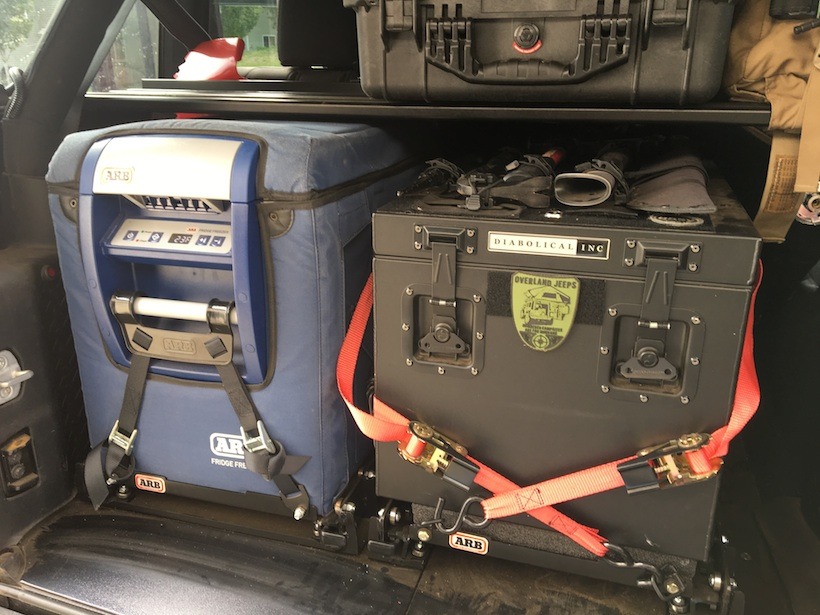
Since I run an ARB Freezer/Fridge, a concern of mine is always power. I keep a FM16-7200 120W Power Film Solar Panel in my kit bag. It’s not a water proof system, but it will fold up into a small package versus some of its water-tight counter parts. When unfolded and set up, it is about the size of my AEV roof rack plus about 6-8″ to the front or back. In case you’re wondering, yes, they do still work even when it’s cloudy. They just aren’t as efficient. And that about wraps it up for my cooking/kitchen kit.
Share your cooking/kitchen kit on TAP’s Forum and TAP into Adventure!
Photos and article: Andrew Halsing
Editor: Lori Palmer





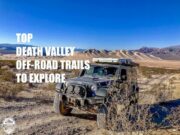

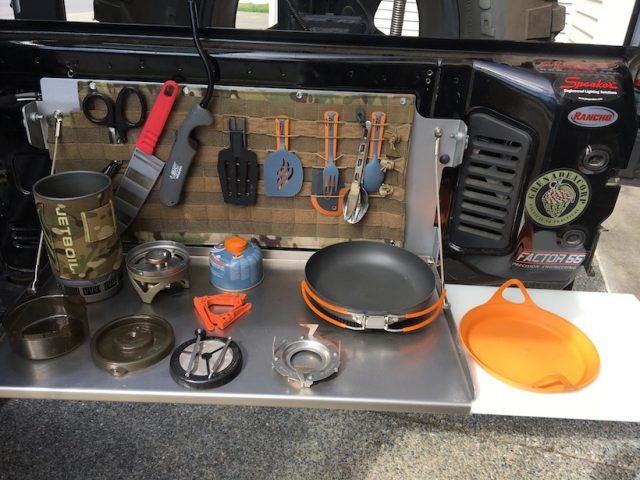
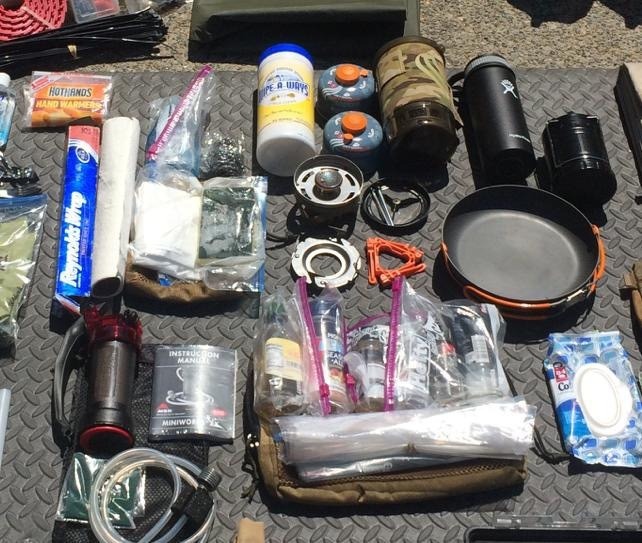
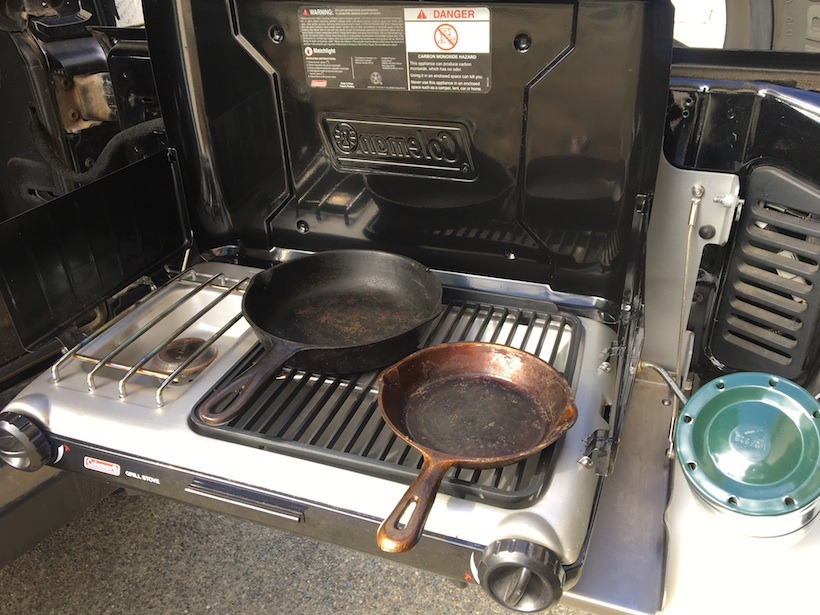
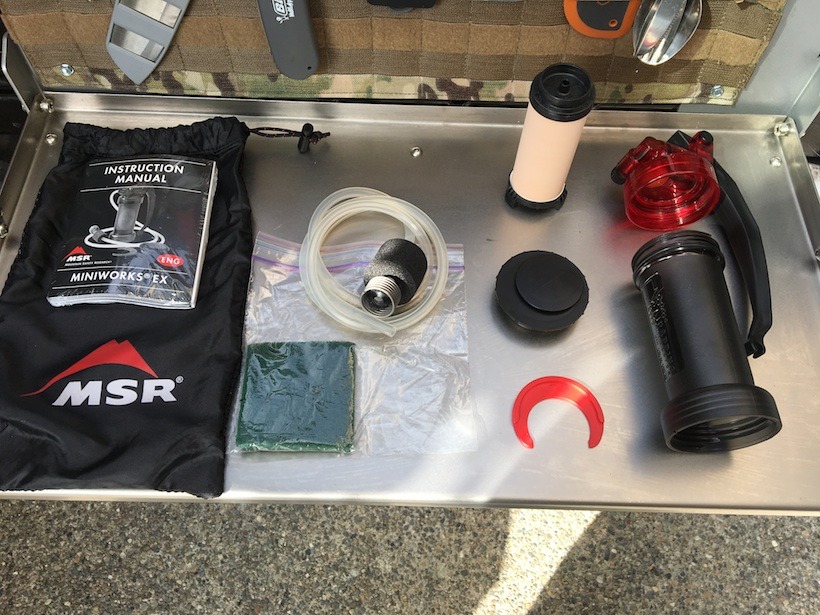







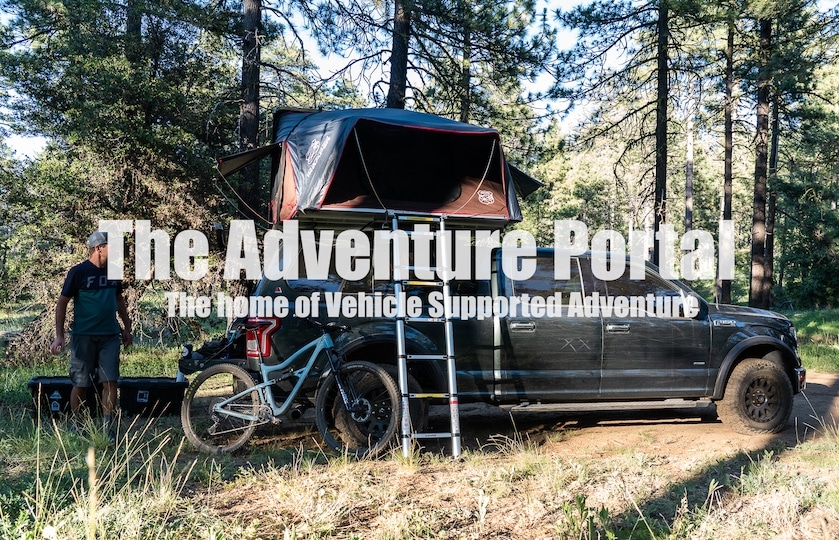
Very nice setup! What Molle panel do you have attached to your trailgater?
Hey Paul. Andrew got it custom made by a company called Tactical Tailer. tacticaltailor.com. He went in and ordered face to face and said on-line custom orders can be difficult, but possible. they take 4-6 weeks to complete custom orders. It’s a Veteran run, American company. …. sounds like something to support, yeah?
Thank you very much!
G’day,
Love ya setup!!
What have you used as the splashback to hold your utensils, knives etc on the Trailgator?
Cheers
Drew